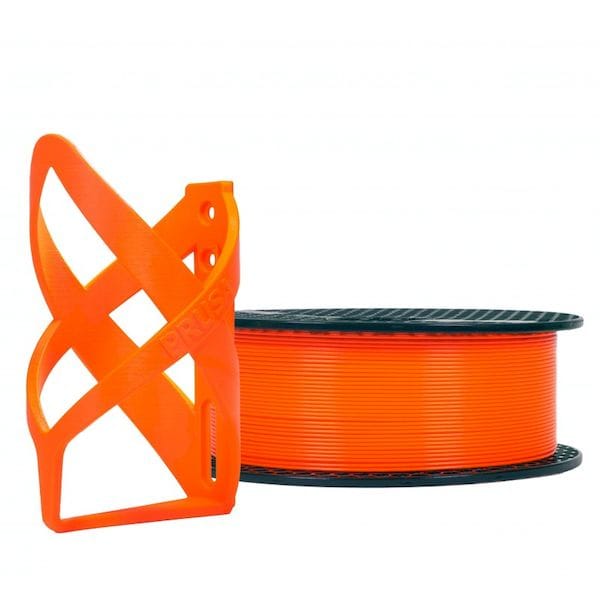![Orange ASA 3D printer material from Prusament line [Source: Prusa Research]](https://fabbaloo.com/wp-content/uploads/2020/05/image-asset_img_5eb0924c4a278.jpg)
Prusa Research has released a new line of 3D printer filaments made from ASA, and I think this could be a turning point.
Czechia-based Prusa Research has been producing their own 3D printer filament — Prusament — for a year now, and it’s been very well received. Like many innovations in 3D printing, they were not satisfied with the quality and consistency they were receiving from other vendors and decided they should try to do it better themselves.
Their operation has a strong focus on quality, as do other leading producers of filament for 3D printers. However, there’s a difference with Prusa Research’s approach: they publish the quality report for each individual spool they sell! Each spool has a QR code that links to their factory database where they track the diameter of each cm of the spool as it is produced.
In this way they ensure the entire spool is within the tolerance levels stated. That tolerance is 0.02mm variance in the diameter of the 1.75mm filament. This itself is notable, as most other producers state “only” 0.05mm tolerance. But importantly, other vendors simply publish the number, but do not provide any quality data on individual spools.
Prusament Success
This attention to detail paid off handsomely for Prusa Research, who quickly realized they could not keep up with demand. After their first production line installation, they had to add multiple additional lines, making them one of the larger producers of 3D printer filament worldwide. I’m not sure how many lines they have now, but more than likely they are adding more as we speak.
However, the only materials they produced were PLA and PETG, the most basic of 3D printer materials. ABS was mysteriously absent from their product shelves. Now, that’s changed.
They’ve introduced a new material, ASA.
ASA is probably not something most 3D printer operators are familiar with, although it’s gained quite a bit of popularity with the more technically proficient users.
It’s a material that is somewhat comparable to ABS, as it has similar properties, but it is better to use.
ASA Properties
The major challenge with ABS is that is can easily warp due to thermal differences. For that reason many 3D printer operators prefer to use PLA, which is a lot easier to print, unless there is a specific engineering reason to do so.
But there’s another negative property of ABS that fewer are aware of: it is susceptible to UV light. That is, if a print is exposed for some time outside where the sun’s UV rays can strike it, the object will degrade, crack, discolor and ultimately fail.
The good news is that ASA does not degrade when exposed to UV light. Objects printed in it are perfectly suited for any outdoor application.
The even better news is that ASA, while carrying many of ABS’ good qualities, is also a bit easier to print than ABS. It doesn’t warp quite as much, although more than PLA. It even does not smell as bad when printing. And it also can be used in the acetone vapor smoothing process, like ABS.
It carries a reasonable price, unlike many specialty materials available elsewhere.
Future of ASA for 3D Printing
While ASA has been available on the market for some time, I believe that Prusa Research’s step to bring it forward as an alternative to ABS, which Prusa Research never offered. Their client base is so huge and their filament quality reputation is so high that it is likely many people will be trying out ASA for the first time, and perhaps they will like it.
Could this be the start of the end of ABS? Have we hit peak ABS? Perhaps, but this will play out over many years yet.
Meanwhile, if you want to try out ASA on your 3D printer, Prusa Research’s offerings might be a good place to start.
Via Prusa Printers











An inventive designer has developed a method for producing 3D paper objects using recycled paper and 3D printed molds.